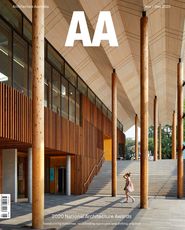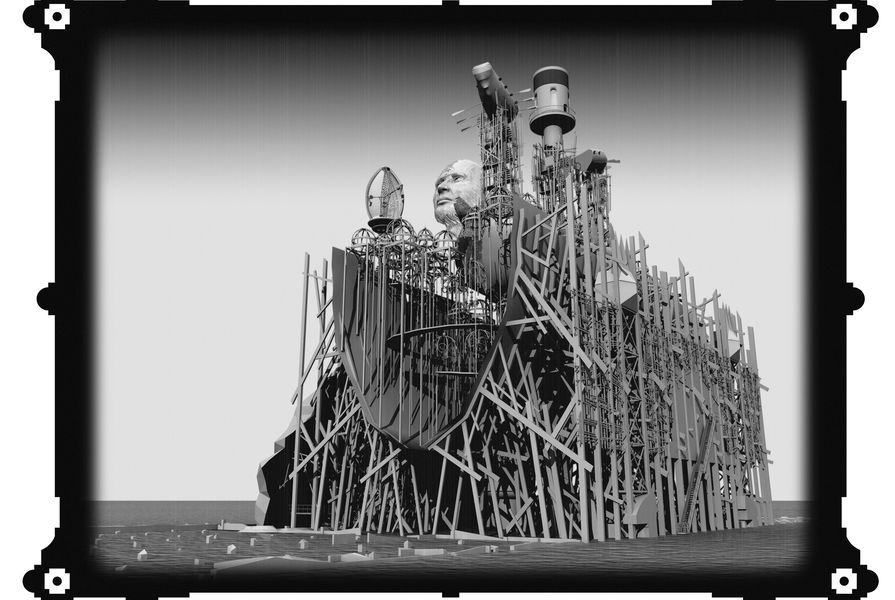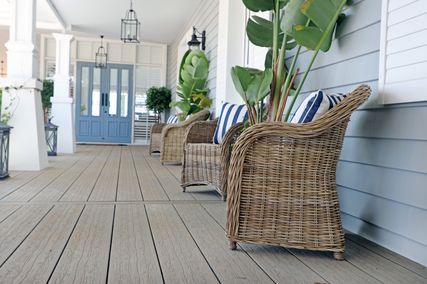When Katelin Butler invited me to write a reflection on the AA Prize on the occasion of its third iteration, I went back and reread the articles and jury statements I had written during the second version. (The prize was first awarded in the years 1993 to 1998 and was revived between 2008 and 2012.) And there, in words I had since forgotten, were many of the things I was anticipating saying this time – already thought, already written. Then, as now, I started by thinking about the rich history of speculative work, and its essential role within the discipline (as conceived in the West) from the beginning:
Architecture has an important tradition of “paper architecture” – projects that are unbuilt, and sometimes unbuildable, but which nevertheless make significant contributions to the development of the discipline. Think of the many projections of ideal cities over the centuries – works by Piero della Francesca, Filarete and others of the Renaissance, Le Corbusier’s Radiant City, Frank Lloyd Wright’s Broadacre City, Ludwig Hilbershiemer’s Vertical City, Constant Nieuwenhuys’s New Babylon, the Smithsons’ Golden Lane scheme, Léon Krier’s postmodern cities and so on. Think of the Neoclassical proposals of Étienne-Louis Boullée, Claude-Nicolas Ledoux and Jean-Jacques Lequeu; the etchings of Giovanni Battista Piranesi; the futurist speculations of Antonio Sant’Elia; El Lizzitsky’s Prouns and the work of the Constructivists; the imagined worlds of Superstudio or Archigram; the utopian visions of Buckminster Fuller; and the dystopian ones of Lebbeus Woods. The list could go on and on. Consider the drawings of Zaha Hadid and Daniel Libeskind, which had such an effect on recent architectural culture long before either architect started building. And then there are all the explorations, formal and otherwise, of the potential of digital technologies over the last decade or two … (Remember the impact of Diller + Scofidio’s Slow House in the early nineties, a project that was not built beyond its foundations, but which was highly influential due to its wide circulation through a variety of publications, including Progressive Architecture as the winner of the 1991 Progressive Architecture Design Award.)1
8Jury members for the 2008 AA Prize for Unbuilt Work initially dismissed Michael Spooner’s drawings (this page, opposite and following page) as “too unlikely,” but the submission drew them in and ultimately won the prize.
Embedded in that quick survey of architects and projects from the Renaissance to the early nineties were many that have stayed with me since architecture school. Libeskind’s Chamberworks and the drawings, models and installations through which the Slow House was manifest occupy very special places in my architectural heart, as do El Lissitzky’s Prouns (“project for the affirmation of the new”). I have always been interested in the potential of drawings as projects, and captivated by their physicality and materiality – crisp black lines carefully inked across white sheets; grey lead smudges lingering on trace, betraying the labour of making, and reminding us that drawings are not merely transparent windows onto some reality that exists elsewhere.
Of course, the media within which drawing and modelling now occurs have shifted since the most recent heyday of “paper architecture.” I may be nostalgic for the time when line weights were an outcome of how hard we pressed as we twisted those sharpened pencil tips over an A1 sheet – but the need to critically engage with our discipline is as important as ever, and the potential to do this through its means of representation remains strong.
This second revival of the AA Prize is particularly welcome as the venues for recognizing and publishing architectural conjecture are limited, and yet we need these speculations more than ever. In the clutch of a pandemic, we find ourselves in strange and difficult times, facing collective pressures and individual worries that leave many awake at night. There is much discussion about what architecture can and can’t do in these circumstances. What can we contribute? How can we best activate our knowledge and skills? Where can architects find their leverage?
A Clinic for the Exhausted by Michael Spooner, winner of the AA Prize for Unbuilt Work in 2008.
Engaging with these questions means the profession – in all its complexity – speaking up and being active on many fronts; exploring many roles, many scenarios and seeking varied opportunities to gain purchase. Unbuilt speculations are just one vehicle for this. Propositional projects and unsolicited works can create provocations to discussion and demonstrate new possibilities. But, as I wrote in 2007, to have this kind of effect, unbuilt work needs to “go into circulation, to be considered and debated.” If ideas are to have an impact, and to demonstrate what architects can do, we need avenues for dissemination and processes of recognition.
There are also other possibilities for unbuilt work, including the opportunity for internal disciplinary reflection and the pleasures to be found in making, modelling and drawing. This evokes the love many of us have for architecture – and offers the chance of some respite from the crushing pressures of keeping practices afloat and careers alive. We need this too.
This range of possibilities is always at play in the AA Prize for Unbuilt Work. There is a tendency to set up an opposition between projects that can only ever exist “on paper” and projects – often unsolicited – that carry an urgent desire to be directly translated into physical impact in the world. Submitted works often fall into one of these categories, or the third option of the commissioned project that did not go ahead for one reason or another. These tensions are one of the strengths of the prize, and engaging in debates about what we value and why is one of the joys and privileges of judging the award. This was at play every year I was involved, but it was particularly pronounced in 2007, the first year of the second series. The main prize went to Michael Spooner’s extraordinary set of drawings: “a project that at first we had thought ‘too unlikely, indulgent and nutty’. It kept drawing us back, enthralling us with its rigour and completeness.” The jury overview was a reflection on these discussions:
There are many versions of what the unbuilt can be. Were we looking for a fabulous project that should have been built, or a speculative work that exploited the potential of “paper” architecture? Interests of jury members differed. Peter [Skinner] hoped for a project, “more architecture than drawing; a serious project, not built that should have been, flashes of under-appreciated brilliance, design as experiment, ideas for the future.” Anthony [Burke] sought “an engagement with the potential of architecture – in the broadest sense of the discipline, and in all its media incarnations – to speculate, to educate, to critique and to question, going places where built work, for obvious as well as less than obvious reasons, can’t go.” But we were all open to compelling work of any kind. We were all looking for strong ideas, developed through architecture, whatever the medium. We were wary of the trap of thinking that ideas are only found in theoretical work, not in proposals for buildings. We sought a close connection between the idea and the work, between thinking and making – thinking through making, in all media.2
This is the nub of the matter. Architecture sustains an extraordinary range of types and ways of working, and we need them all. “The health of the discipline requires the sparks and provocations of the unbuilt. If the profession is to remain vibrant and relevant it needs both speculation and intellectual enquiry at its edges and the evolution of its centre.”3
I ended that 2007 jury statement with the hope that we would see these different types of unbuilt work inflecting and influencing each other. I looked forward to more projects for buildings with real conceptual depth, and to theoretical projects with the power to engage and challenge and create change in the world. Thirteen years later, I want the same thing. I look forward to the work that this decade’s prize reveals. I hope it is a vehicle for architectural hope and joy in the midst of current difficulties and that submitted projects invite us all to explore ways to create impact in the world.
The AA Prize for Unbuilt Work 2021 - Exhibition will be on display at the Dulux Gallery, Melbourne School of Design, from 31 March to 5 April.
1. Justine Clark, “Architecture Australia – Unbuilt,” Architecture Australia, vol 96 no 1, Jan/Feb 2007, architectureau.com/articles/architecture-australia-unbuilt.
2. 2007 AA Prize for Unbuilt Work – Jury overview (Shelley Penn, Peter Skinner, Anthony Burke, Justine Clark), Architecture Australia, vol 97 no 1, Jan/Feb 2008, architectureau.com/articles/aa-prize-for-unbuilt-work-3.
3. 2007 AA Prize for Unbuilt Work – Jury overview.
Source

Discussion
Published online: 25 Mar 2021
Words:
Justine Clark
Issue
Architecture Australia, November 2020





















